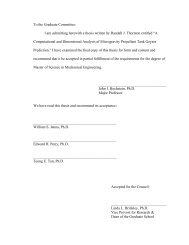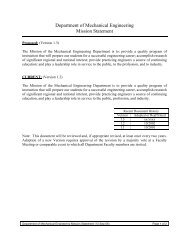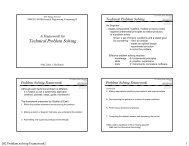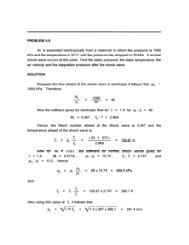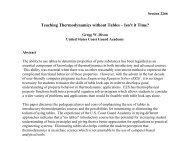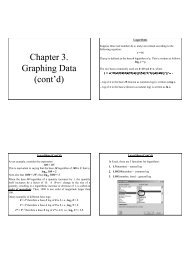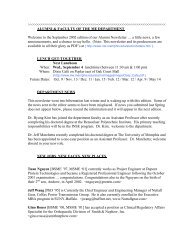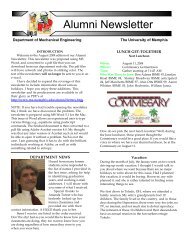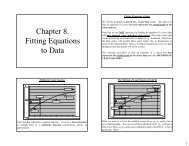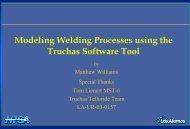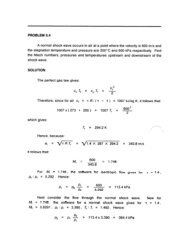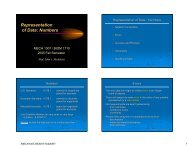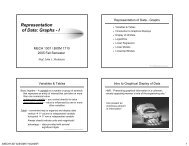MECHANICS of FLUIDS LABORATORY - Mechanical Engineering
MECHANICS of FLUIDS LABORATORY - Mechanical Engineering
MECHANICS of FLUIDS LABORATORY - Mechanical Engineering
You also want an ePaper? Increase the reach of your titles
YUMPU automatically turns print PDFs into web optimized ePapers that Google loves.
∆H = H 2<br />
- H 1<br />
= p 2<br />
ρg + V 2 2<br />
2g + z 2<br />
p<br />
- ⎛ 1<br />
⎞<br />
⎝ ρg + V 1 2<br />
2g + z 1⎠<br />
The dimension <strong>of</strong> the head H is L (ft or m). The<br />
power imparted to the liquid is calculated with<br />
the steady flow energy equation applied from<br />
section 1 to 2:<br />
- dW<br />
dt<br />
p 2<br />
= m· g<br />
⎡⎛<br />
⎞<br />
⎣⎝ ρg + V 2 2<br />
2g + z 2<br />
⎠<br />
-<br />
⎛<br />
⎝<br />
p 1<br />
ρg + V 1 2<br />
In terms <strong>of</strong> total head H, we have<br />
⎞⎤<br />
2g + z 1⎠<br />
⎦<br />
- dW<br />
dt = m· g (H 2<br />
- H 1<br />
) = m· g ∆H (18.2)<br />
The efficiency is determined with<br />
η = dW/dt<br />
dW a<br />
/dt<br />
(18.3)<br />
Experimental Method<br />
The experimental technique used in obtaining<br />
data depends on the desired method <strong>of</strong> expressing<br />
performance characteristics. For this experiment,<br />
data are taken on only one impeller-casing-motor<br />
combination. One data point is first taken at a<br />
certain valve setting and at a preselected<br />
rotational speed. The valve setting would then be<br />
changed and the speed control on the motor (not<br />
shown in Figure 18.1) is adjusted if necessary so<br />
that the rotational speed remains constant, and<br />
the next set <strong>of</strong> data are obtained. This procedure<br />
is continued until 6 data points are obtained for<br />
one rotational speed.<br />
Next, the rotational speed is changed and<br />
the procedure is repeated. Four rotational speeds<br />
should be used, and at least 6 data points per<br />
rotational speed should be obtained.<br />
v-notch weir<br />
return<br />
valve<br />
control panel<br />
and gages<br />
pressure<br />
tap<br />
1 nominal<br />
schedule 40<br />
PVC pipe<br />
•<br />
sump tank<br />
inlet<br />
z 2<br />
pressure<br />
tap<br />
•<br />
valve<br />
motor<br />
motor<br />
shaft<br />
pump<br />
z 1<br />
1-1/2 nominal<br />
schedule 40<br />
PVC pipe<br />
FIGURE 18.1. Centrifugal pump testing setup.<br />
47



